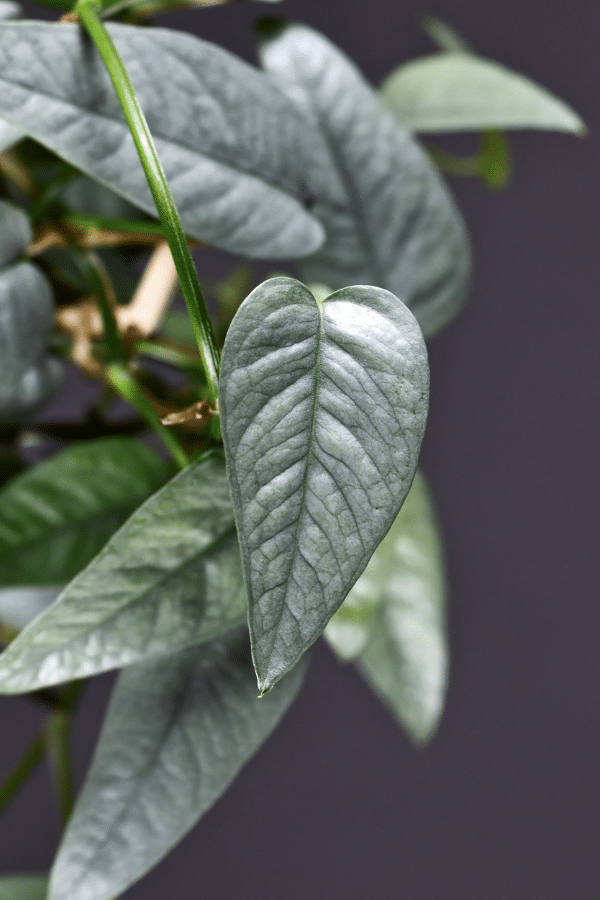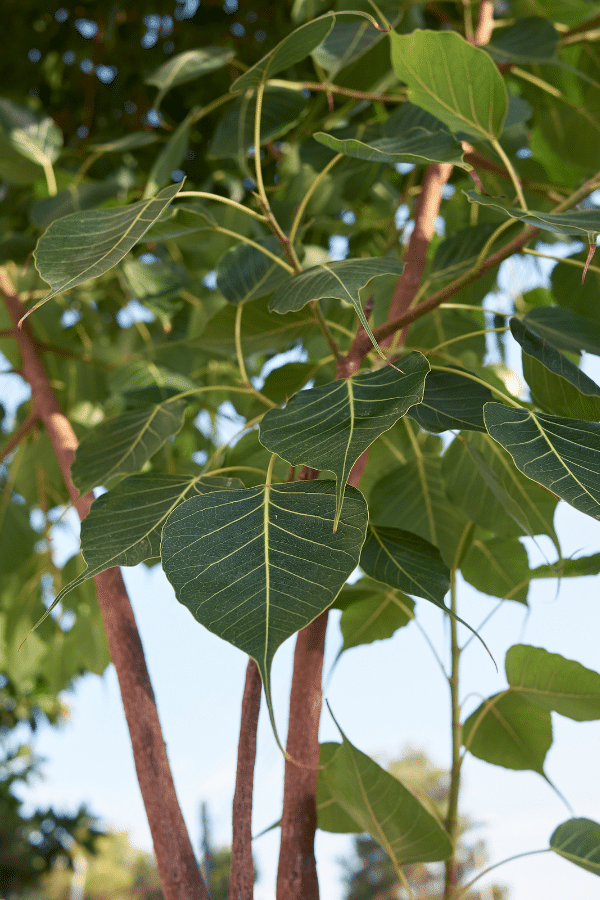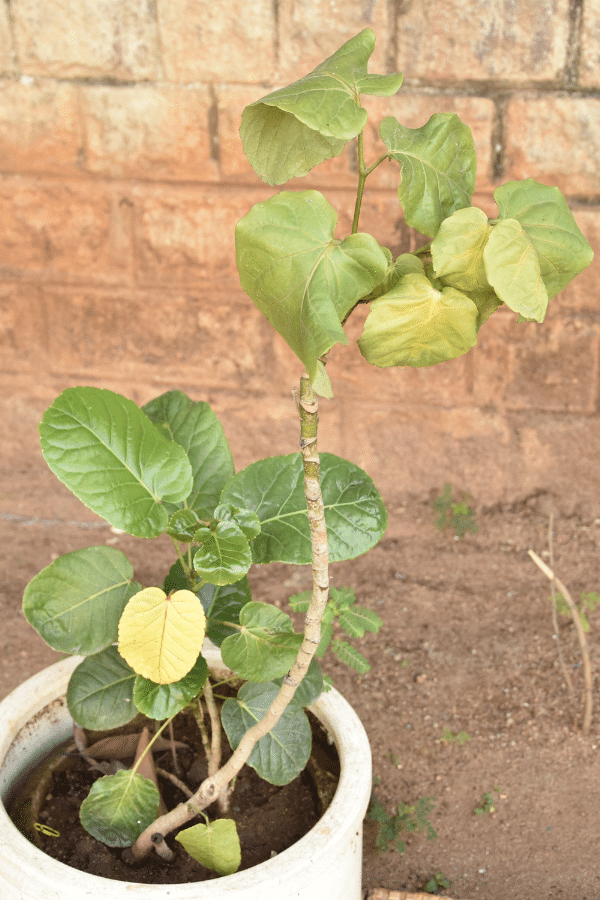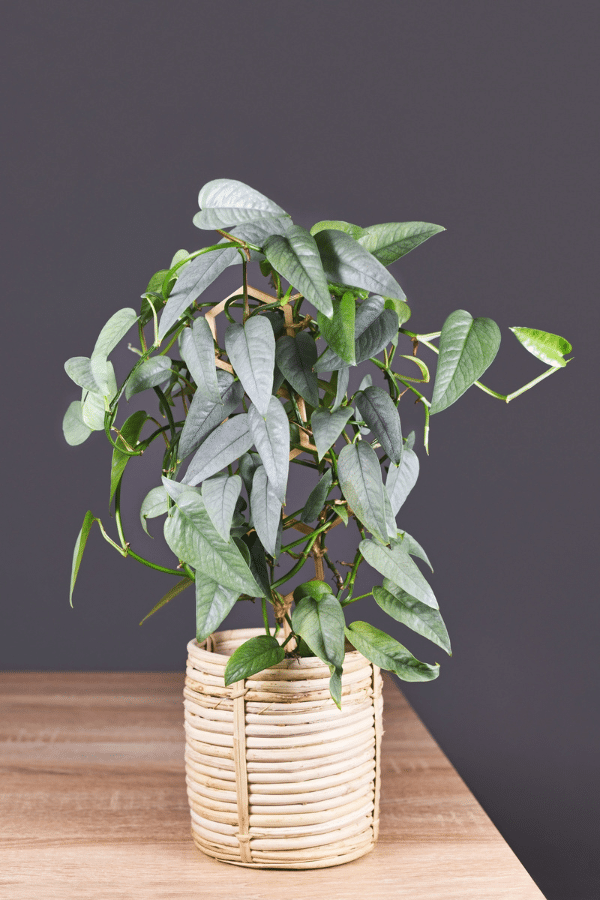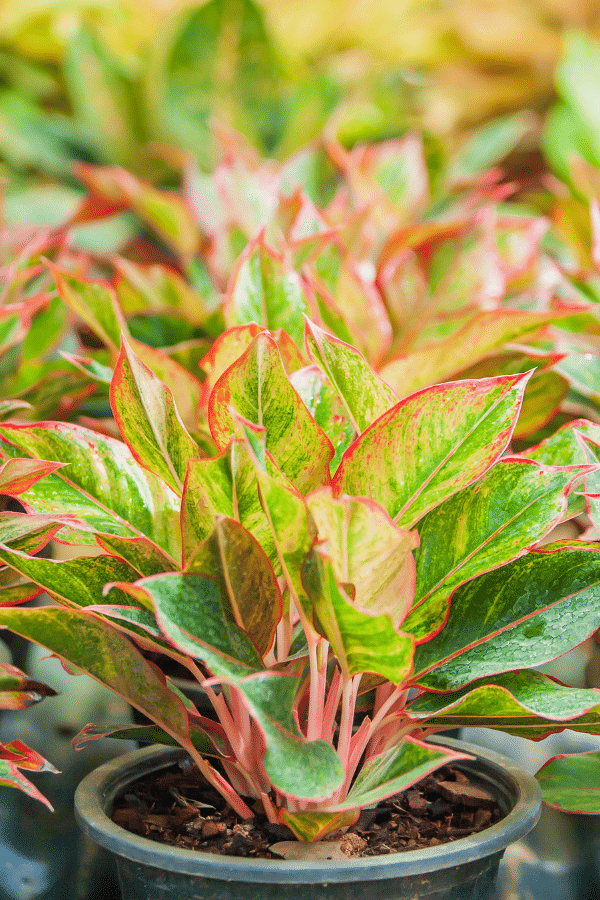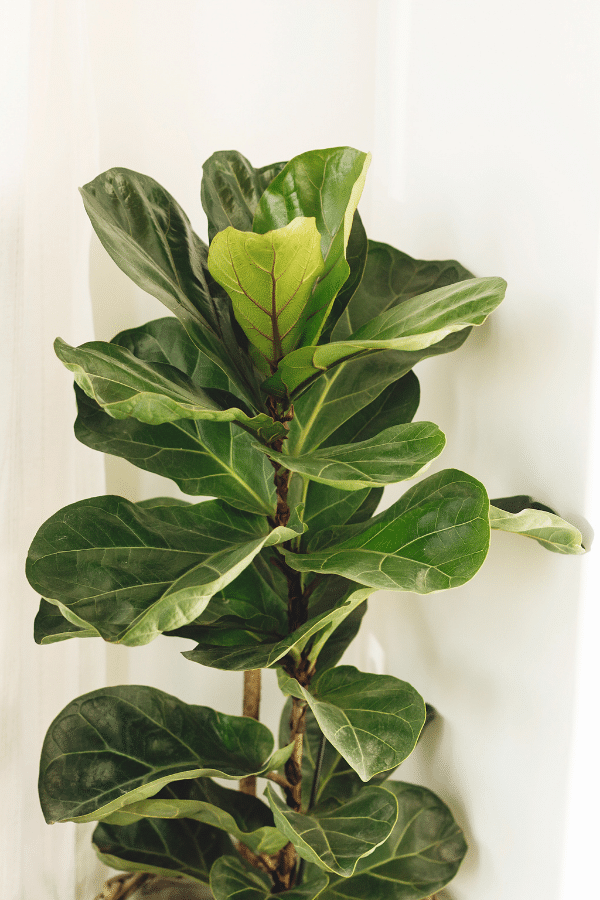NJoy Pothos
Scientific Name: Epipremnum Pinnatum ‘N Joy’
Njoy Pothos care is not hard at all. These trailing indoor plants are easy to care for. Njoy pothos is a great houseplant that will bring tons of joy and to your space. With the right Njoy Pothos care, the Njoy can live a long, healthy life.
Quick Care Overview
| Common Name | Njoy Pothos |
| Scientific Name | Epipremnum Pinnatum ‘Njoy’ |
| Family | Araceae |
| Origin | Asia, Pacific Islands |
| Identification | Color-blocked, variegated leaves |
| Height | 10 feet tall |
| Soil | Well-draining soil |
| Water | Allow top two inches of soil to dry out before watering |
| Temperature | 65-85F |
| Sunlight | Bright, indirect sunlight |
| Toxic to Cats & Dogs | Yes |
| Toxic to Humans | Yes |
| Pests | Aphids, mealybugs |
| Diseases | Bacterial wilt disease, root rot |
Below we will dive deep into how to care for Njoy Pothos.
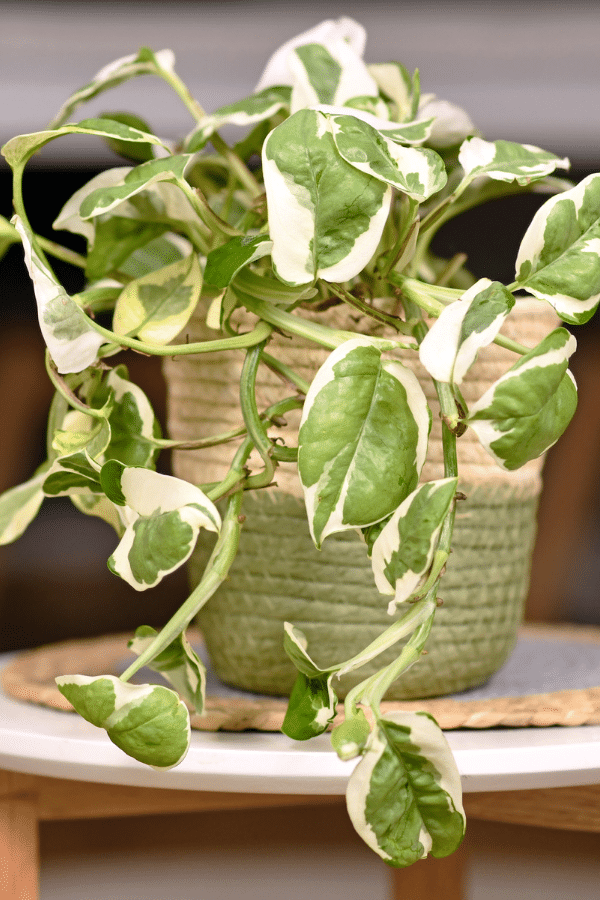
NJoy Pothos History
The Njoy pothos is native to Asia, Australia, and the Pacific Islands. This Pothos variation just came about in 2002 from a naturally occurring mutation in Marble Queen Pothos. It is a patent pothos and was created by Hansoti, the same person who created Manjula Pothos. So these three Pothos varieties are very similar in look and only a few things differentiate them.
NJoy Pothos Identification
The Njoy Pothos has strong colors ranging from green to cream to white to yellow. You can notice the variegation on this plant is color-blocked with a green block of color, then a white block, and then another green block going across its leaves. The leaves of the Njoy Pothos are smaller than most Pothos and the leaves are curly.
NJoy Pothos Growth Facts
Njoy Pothos is considered a slow-grower when compared to other Pothos varieties.
How Big Does a NJoy Pothos Get?
In its natural environment, the Njoy Pothos can climb on trees up to 50 feet tall. But when taken out of its native environment and grown as a houseplant, it usually reaches heights between 6-9 inches but can trail up to 10 feet long.
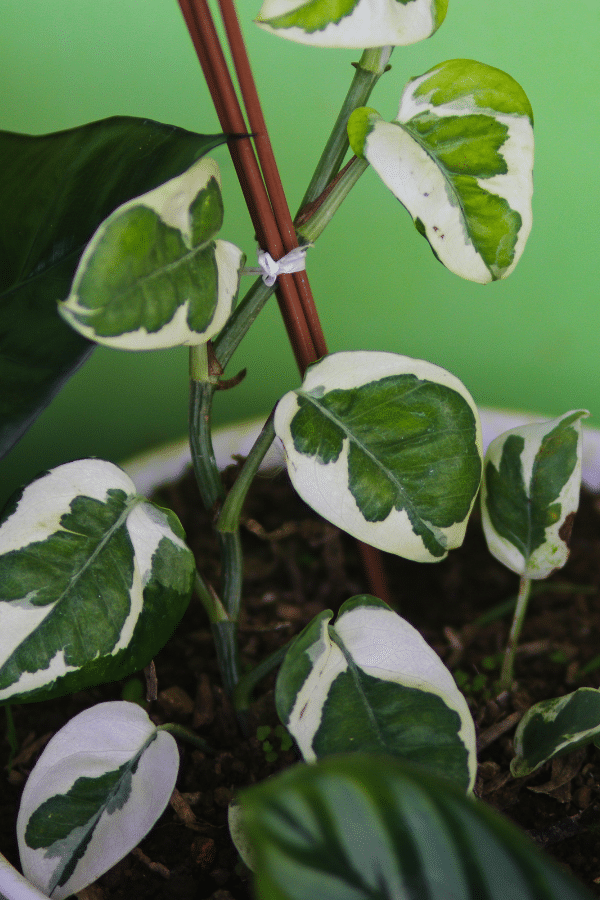
NJoy Pothos Care
The Njoy Pothos requires a bit of attention and proper pothos care to grow to their fullest potential.
Best Soil for NJoy Pothos
The Njoy Pothos grows best in well-draining soil with a 50-50 mixture of perlite and peat moss, although you can grow it in most potting mix as long as it has proper drainage.
NJoy Pothos Fertilizer
For best growth results, provide your plant with a balanced NPK fertilizer once a month during spring and summer. Always remember to reduce or stop fertilization during the months when the plant is not growing as it will not have much effect on the plant.
NJoy Pothos Watering
The Njoy Pothos grows best in slightly moist soil but does need to have the top one to two inches of soil dry out in between waterings. Get to know your Njoy Pothos and understand when it needs a drink of water.
NJoy Pothos Light Requirements
This Pothos thrives in bright to moderate indirect light. Keep the Njoy Pothos out of direct sunlight as this can burn their leaves. The Njoy is adaptable for the most part as they can also tolerate low light environments. Let the Njoy vine trail over a bookshelf to get it the light it requires.
NJoy Pothos Temperature & Humidity
This Pothos thrives in warmer temperatures ranging from 65 to 85F. If you are able to maintain this temperature indoors your plant will have no issue growing well. This plant prefers high humidity between 60-90%. If you can’t achieve this in your home, supplement with a humidifier, pebble tray, or place it in a terrarium.
Repotting NJoy Pothos
Pothos houseplants need to be repotted every 12-18 months. If you notice your Pothos becoming root-bound and the roots coming through the drainage holes, this is also a good time to repot your Njoy. It is best to repot during the beginning of the plant’s active growing season, but can be repotted right away if it is root-bound.
NJoy Pothos Maintenance & Pruning
Njoy Pothos doesn’t require much maintenance. If you want your Njoy houseplant to trail, let it do its thing. If you want it to climb or grow bushy, then you’ll want to prune it back a few times a year. To prune the Njoy Pothos start by examining the stems of your plant and locating the leaf nodes. Then trim the stem with clean scissors to a quarter of an inch above the node. Once pruned, your plant will produce new stems, which will give it a bushier look with its foliage.
NJoy POTHOS RElated Articles:
- Manjula vs NJoy Pothos
- NJoy Light Requirements
- NJoy Brown Spots
- Glacier vs NJoy
- Propagating NJoy Pothos
- NJoy Pothos Watering
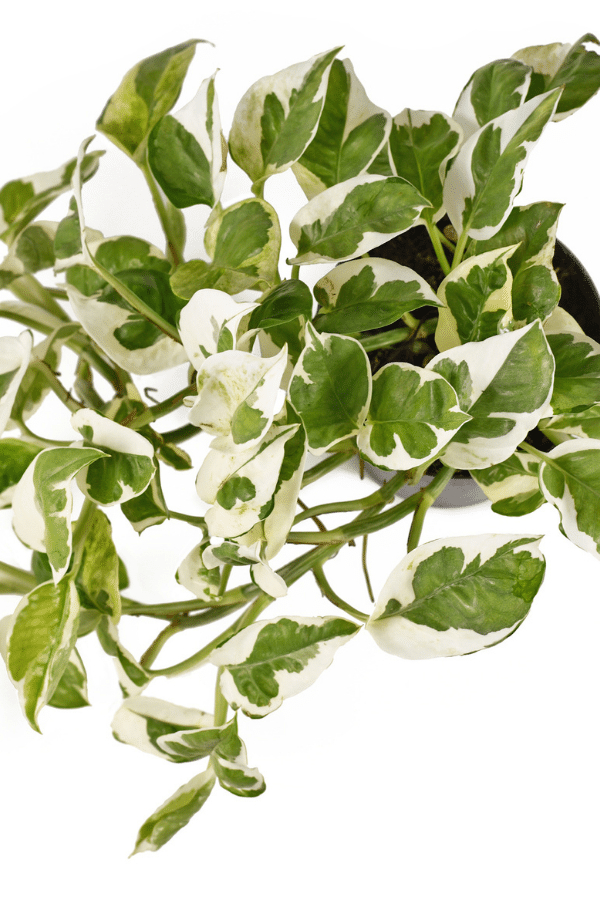
Propagating NJoy Pothos
Propagation of Njoy Pothos can be done through stem cuttings. This is an easy process that requires taking cuttings from the plant and placing them in water to allow for new roots to grow. New roots should start to grow within a few days and become fully developed within four to six weeks.
NJoy Pothos Toxicity
The Njoy Pothos is toxic, both to humans and pets. It will only cause side effects if ingested in substantial quantities. Even then, consider growing your Njoy away from the reach of children and pets.
Toxicity to Humans
The Njoy Pothos is toxic to humans. Don’t ingest and keep away from children. If ingested, symptoms include mouth irritation, stomach irritation, vomiting, and diarrhea.
Toxicity to Cats & Dogs
The Njoy Pothos is toxic to cats and dogs. Keep this plant away from household pets and don’t let them ingest.
NJoy Pothos Problems
NJoy Pothos Leaves Turning Yellow
Yellowing leaves on N joy Pothos are usually caused by too much water or not enough lighting. In this case, you’ll want to be cautious of the water intake of your plant and maybe even replace the soil if it isn’t drying out between waterings. Also, provide your plant with more light if yellow leaves are occurring.
NJoy Pothos Leaves Turning Brown
Browning leaves with the Njoy Pothos are normally caused by overwatering. In this case, you should reduce the frequency that you are watering your plant. Also, too much sunlight can burn plants’ leaves making brown spots.
NJoy Pothos Diseases
A common disease that can affect a Pothos plant, other than root rot, is bacterial wilt disease. This disease infects nodes that are in the process of losing and can lead to all propagation loss. To know if your plant has this disease, you will need to examine the leaves and stems for signs. Signs of this disease include drooping, darkening leaves, and darkening veins in the stems and leaves. To remedy this disease, you will have to isolate this plant and bag it right away. Remove all of the soil from the roots. Disinfect any tools and surfaces used. Get a clean new pot and repot it. Watch for the disease coming back within the coming few weeks. If it does come back, it’s best to discard the plant as the hopes for saving it a second time are minimal.
NJoy Pothos Pests
Aphids and mealybugs are the most common pest that will infest your Njoy Pothos. To get rid of these pests, spray neem oil or insecticidal soap. Take preventative care and remove the pests as soon as you see them because pests infest and spread quickly.

